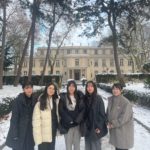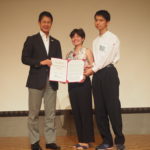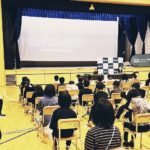The Schmoe House – support received from overseas –
The atomic bombing of Hiroshima in August 1945 destroyed the whole city and people lived a difficult life of physical and psychological hardships. In this situation, the various kinds of support were delivered from not only Japan but also overseas although the amount of available information was significantly limited. It encouraged the struggling citizens of Hiroshima both physically and spiritually.
Mr. Floyd Schmoe from the U.S. (1895-2001) was so heartbroken to hear the news of the bombings of Hiroshima and Nagasaki and launched a project to build houses with his own hands, for those in need in Hiroshima. The Schmoe House located in Eba Nihonmatsu Naka-ku Hiroshima was built as a community center in 1951. Since 2012, the house displays the stories about the support from overseas after the atomic bombing and opens to public as an annex of the Hiroshima Peace Memorial Museum.



Exhibition Space in Schmoe House
Floyd Schmoe
Floyd Schmoe (1895-2001) lived in Seattle, the U.S. and was a lecturer of forestry at the University of Washington. He also had been engaged in support activities for Japanese Americans during World War II. He was shocked by the news of the atomic bombings of Hiroshima and Nagasaki and launched a project to build houses for citizens in Hiroshima who lost their houses. He firstly visited Hiroshima in 1948. Not only engaging in relief activities, Schmoe explained his project to stakeholders to realize it. 4,300 dollars were donated to his project called “Houses for Hiroshima”. Then, Schmoe came back to Japan with three members in July 1949.

Courtesy of the Hiroshima Peace Memorial Museum
Donated by Brooks Andrews
“Houses for Hiroshima” 1st Plan: 1st houses – Minami-machi in 1949
Schmoe and members arrived at Hiroshima on August 4, 1949. Although 4 years has been passed after the atomic bombing of Hiroshima, the housing shortage in Hiroshima was serious. They built two Japanese-style single-story wooden houses partitioned into two units in a Minami-machi area where municipal dwelling houses were under construction. 4 members including Schmoe hired one carpenter and built “Houses for Hiroshima” with volunteers from Tokyo and in Hiroshima.

Courtesy of the Hiroshima Peace Memorial Museum
Donated by YOSHIDA Junko
Deposited by the Learn from Schmoe association
“Houses for Hiroshima” 2nd Plan: Community House “Eba Village (present Schmoe House) in 1951
Nine houses and one community center were built at the southern foot of the Ebasarayama Mountain. It was called “Eba village” and the biggest scale of “House for Hiroshima” project. You can only see on community center even today called “Schmoe House”.
Schmoe wanted to build a community house which could be used not only by Eba Village residents but also people living in neighboring areas. The community house was used as the local community center for a long time.
15 buildings (21 houses) were built by “Houses for Hiroshima” Project from 1949 to 1952. As one of the project, volunteers in Nagasaki built houses and community houses also in Nagasaki.
Schmoe also built houses for people who lost their houses by Koran War (1950-1953) and Middle East War (1948-1973) after the activities in Hiroshima and Nagasaki.
The deep love and message of peace by Schmoe and others involved in “Houses for Hiroshima” Project are still being handed down.
Schmoe House
1-2-43 Eba-nihommatsu, Naka-ku, Hiroshima City 730-0834
Hours Open:9:00 – 17:00
Closed: Mondays (It will be open if Monday
is a national holiday or August 6); the weekday after a national holiday; and
December 29 to January 3.
Admission: Free
HP: http://hpmmuseum.jp/modules/info/index.php?action=PageView&page_id=75&lang=eng
Tags associated with this article







